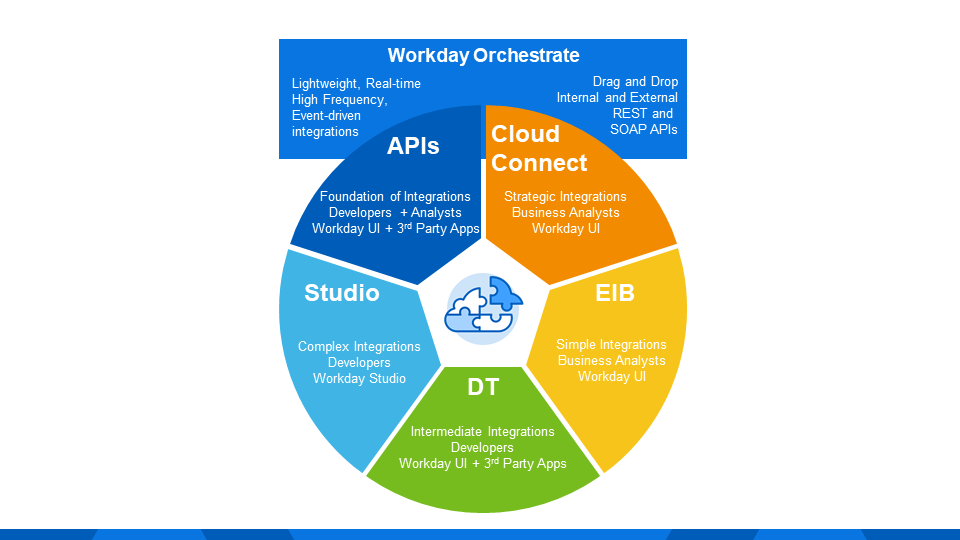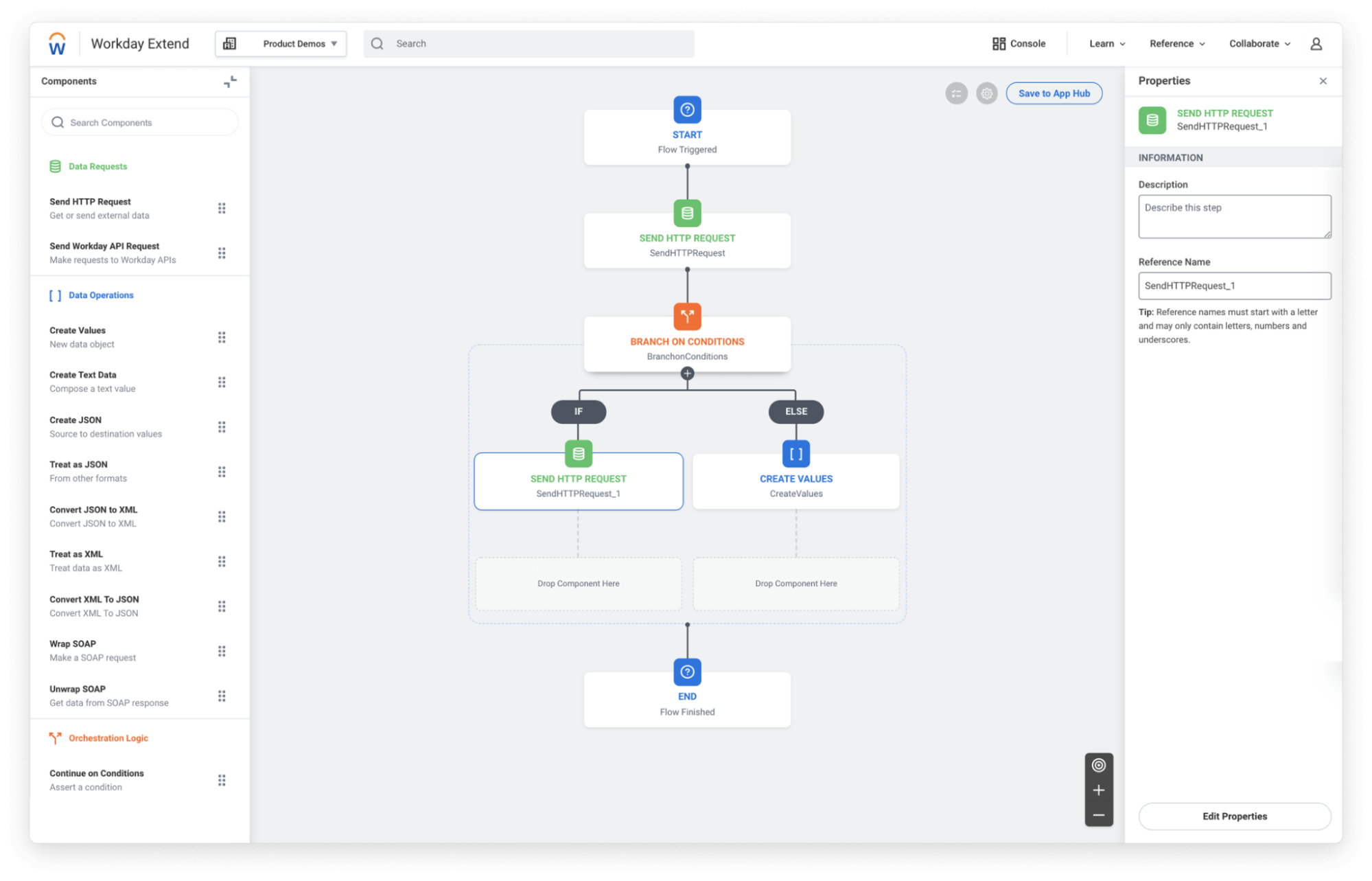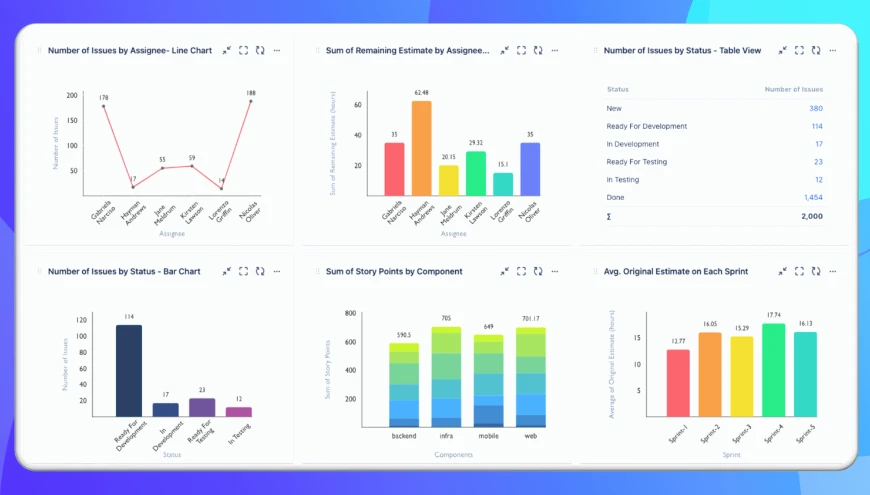
Workday Orchestrate is a powerful capability that enables organizations to automate and streamline complex business processes across systems, departments, and teams. It allows enterprises to build, execute, and monitor end-to-end workflows within Workday and beyond, using a no-code/low-code visual designer. This approach reduces manual steps, enforces standardization, and improves data consistency.
In fact, early adopters saw a reduction in integration processing time by nearly 50% after deploying Workday Orchestrate in production during 2024. With Workday Orchestrate, enterprises can scale their automation strategy across HR, Finance, and other key areas more efficiently. Let’s break down how this capability transforms enterprise workflow automation in real-world technical environments.
While many organizations rely on traditional workflow tools like RPA or custom scripts, Workday Orchestrate offers native advantages in flexibility, scalability, and governance. Here’s how it compares:
Workday Orchestrate serves as a centralized workflow engine for unifying actions, approvals, and data exchanges across Workday products such as HCM, Financials, and Procurement.
Centralized workflows help remove silos between work functions so you have process alignment across end-to-end processes. For example, onboarding workflows that touch HR, IT, and finance can be designed and modeled as one orchestration flow across other workflows in different modules without having to script or perform integration hacks.
Key highlights:

Visual representation of how Workday Orchestrate connects with core integration tools like APIs, Cloud Connect, EIB, DT, and Workday Studio to enable end-to-end process automation.
Enterprise workflows rarely exist in isolation. Most real-world processes involve systems outside of Workday, such as identity providers, ticketing tools, payroll systems, or custom enterprise apps. Workday Orchestrate, when combined with Workday Extend, allows developers to include external systems in workflow logic.
This ensures that workflows are not restricted to Workday data. Developers can build Extend apps that register custom events and API endpoints, enabling deeper orchestration capabilities beyond core Workday.
Examples:
This capability makes orchestration a true enterprise-grade automation engine.
Robust automation needs to account for exceptions, fallbacks, and business rules. Workday Orchestrate provides native support for:
These capabilities help enterprises model real-life process complexity without writing code.
For example, if a vendor approval is delayed beyond 72 hours, the workflow can auto-escalate or route to an alternate approver. Similarly, if an API fails to respond, retry policies can be defined to handle transient issues gracefully.
This makes workflows resilient, self-healing, and reliable under load.
Workday Orchestrate is built tightly into Workday's event-driven architecture. Business Events—such as a new hire, job change, or invoice submission—can trigger the initiation of a workflow. Business Events are inherently available across the modules and can be used to trigger orchestration flows in real-time.
This means workflows react to changes in the business as they happen. There is no need for polling or scheduled jobs.
Use cases:
Event-driven automation is crucial for reducing manual follow-ups and ensuring compliance with internal SLAs.
Workday Orchestrate provides a visual builder to develop complex workflows with no-code, which helps to quickly visualize the steps in a workflow, such as assigning tasks, conditional checks, data manipulation, etc. This speeds up the delivery process and means experts in the domain, and not just IT, can create workflows.
But Workday doesn’t compromise on governance. Organizations can:

Drag-and-drop workflow canvas in Workday Orchestrate that allows users to visually design complex, no-code business processes with built-in logic and task sequencing.
This balance between agility and control makes Workday Orchestrate suitable for both business and IT-led automation programs.
Orchestrations can be monitored in real time through Workday’s monitoring dashboards. Teams can view:
In addition, orchestration logs are integrated with Workday Prism Analytics. This allows deeper insights into process KPIs, such as average time to completion, most frequent failure points, and resource workload.
This observability helps IT and business teams continuously improve automation outcomes and respond to issues quickly.

Workday Prism Analytics interface presents orchestration execution trends, error incidents, and SLA compliance metrics to help teams monitor, analyze, and optimize workflow performance in real time.
Enterprise automation requires scalability and security as core principles. Workday Orchestrate is built on Workday’s secure infrastructure, and supports:
Orchestrations can handle thousands of concurrent executions with consistency and data integrity. Whether it's running payroll workflows across geographies or automating job changes across business units, orchestrations scale with ease.
This makes it suitable for global enterprises that need repeatable, compliant workflows at scale.
Workday Orchestrate unlocks powerful, real-world use cases across departments. Here are common functional applications where orchestration delivers significant efficiency gains:
As enterprises scale orchestrated workflows, security becomes foundational, and not optional. Workday Orchestrate builds on Workday’s secure-by-design architecture, but automation architects must still apply layered security across endpoints, data, and user roles. Key security considerations include:
When integrating with external systems via Workday Extend, always use short-lived, scoped credentials managed through Workday’s secure API gateway to avoid key leakage or misuse.
Avoid hardcoding secrets in orchestration logic. Instead, use encrypted secrets vaults or tokenization provided by Workday Extend or your identity platform.
Use RBAC to define which users can view, edit, deploy, or monitor workflows. Differentiate access at the orchestration, step, and API level.
Classify data flowing through orchestrations (e.g., PII, payroll, financial) and ensure encryption in transit. Mask sensitive values where possible and avoid including them in logs or external calls.
These best practices help ensure compliance, limit blast radius, and protect critical business processes from unintended exposure.
Find some practical tips for the teams that are already using Workday Orchestrate or planning an enterprise-wide rollout. You can improve reliability, performance, and governance with these.
Workday Orchestrate brings structure, scalability, and intelligence to enterprise workflow automation. It simplifies the creation and execution of cross-functional processes, integrates smoothly with internal and external systems, and ensures that workflows are secure, observable, and resilient. Whether automating HR onboarding, financial approvals, or vendor onboarding, orchestration eliminates manual steps and enforces consistency across the enterprise.